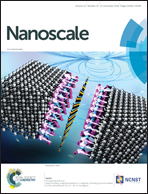Strain-controlled high harmonic generation with Dirac fermions in silicene
Abstract
Two-dimensional (2D) materials with zero band gap exhibit remarkable electronic properties with wide tunability. High harmonic generation (HHG) in such materials offers unique platforms to develop novel optoelectronic devices at the nanoscale, as well as to investigate strong-field and ultrafast nonlinear behaviour of massless Dirac fermions. However, control of HHG by modulating the electronic structures of materials has remained largely unexplored to date. Here we report controllable HHG by tuning the electronic structures via mechanical engineering. Using an ab initio approach based on time-dependent density-functional theory (TDDFT), we show that the HHG process is sensitive to the modulation of band structures of monolayer silicene while preserving the Dirac cones under biaxial and uniaxial strains, which can lead to significant enhancement of harmonic intensity up to an order of magnitude. With the additional advantage of silicene in compatibility and integration into the current silicon-based electronic industry, this study may open a new avenue to develop efficient solid-state optoelectronic nano-devices, and provide a valuable tool to understand the strong-field and mechanically induced ultrafast nonlinear response of Dirac carriers in 2D materials.



 Please wait while we load your content...
Please wait while we load your content...